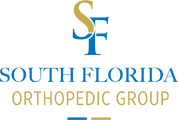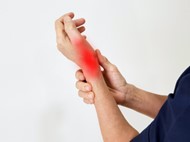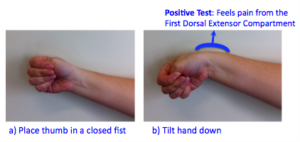Hello, I am Dr. Ayisha Livingstone, MD, a Fellowship trained and Board-Certified Orthopedic Hand Surgeon. I reside and practice in Fort Lauderdale, Florida with the South Florida Orthopedic Group. I completed my Orthopedic Residency at the University of Miami, and my Fellowship at the University of Pittsburgh.
I genuinely love my community here in South Florida and decided to help bring awareness on some common hand and wrist ailments that present to my practice. Once a month I will post a new topic on the website. Please feel free to use the contact information to see me or my colleagues with any questions or concerns.
What is it…?
In 1895, a Swiss surgeon, Fritz de Quervain, published five case reports of patients with a tender, thickened first dorsal compartment at the wrist. The condition has subsequently borne his name, de Quervain tenosynovitis.
De Quervain tenosynovitis (dih-kwer-VAIN ten-oh-sine-oh-VIE-tis) is a painful condition affecting the tendons on the thumb side of the wrist. If you have de Quervain tenosynovitis, you will probably feel pain when you turn your wrist, grasp anything or make a fist.
Although the exact cause of de Quervain tenosynovitis isn’t known, any activity that relies on repetitive hand or wrist movement — such as working in the garden, playing golf or racket sports, or lifting a baby — can make it worse.
Symptoms may include:
- Pain near the base of the thumb
- Swelling near the base of the thumb
- Difficulty moving the thumb and wrist when doing something that involves grasping or pinching
- A “sticking” or “stop-and-go” sensation in the thumb when moving it
If the condition goes too long without treatment, the pain may spread farther into the thumb or forearm or both. Moving the thumb and wrist may make the pain worse.
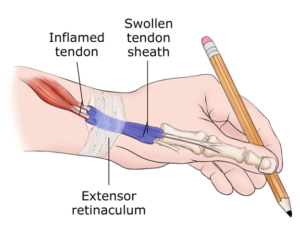
De Quervain’s tenosynovitis of the first extensor compartment.
Reproduced from: Griffin LY (ed): Essentials of Musculoskeletal Care, 3rd Edition. Rosemont, IL. American Academy of Orthopaedic Surgeons, 2005.
What causes it…?
De Quervain tenosynovitis affects the two tendons on the thumb side of the wrist. Tendons are the ropelike structures that attach muscle to bone. Chronic overuse, such as repeating a particular hand motion day after day, may irritate the covering around the tendons. If the covering becomes irritated, the tendons can thicken and swell. This thickening and swelling restrict the movement of the tendons through the small tunnel that connects them to the base of the thumb.The most common cause of de Quervain’s tenosynovitis is chronic overuse of the wrist. Repetitive movements day after day cause irritation and pain. One common movement that causes it is lifting a child into a car seat. Another is lifting heavy grocery bags by the handles. Other causes could include a direct injury to the wrist or inflammatory arthritis.
You are more likely to develop de Quervain’s tenosynovitis if:
- You are a woman.
- You are 40 years of age or older.
- Your hobby or job involves repetitive hand and wrist motions. This is a very common cause.
- You have injured your wrist. Scar tissue can restrict the movement of your tendons.
- You are pregnant. Hormonal changes during pregnancy can cause it.
- You have arthritis.
- You are a new parent/grandparent caring for a newborn.
Other causes of de Quervain tenosynovitis include:
- Inflammatory arthritis, such as rheumatoid arthritis.
- Direct injury to the wrist or tendon, which may cause scar tissue that restricts movement of the tendons.
- Fluid retention, such as from changes in hormones during pregnancy.
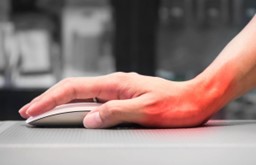
Anatomy…
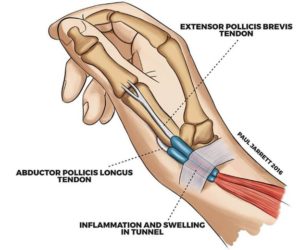
The tendons of the abductor pollicis longus and the extensor pollicis brevis pass through the first dorsal compartment. The abductor pollicis longus tendon is usually multistranded. The extensor pollicis brevis tendon is typically much smaller than even a single slip of the abductor pollicis longus tendon, and it may be congenitally (at birth) absent. A septum separating the first dorsal compartment into distinct subcompartments for the abductor pollicis longus tendons and the extensor pollicis brevis tendon is often noted at surgery.
My Examination
During your evaluation, I will talk to you about your general health and medical history and will ask about your symptoms.
I will carefully examine your hand and wrist and perform a number of physical tests.
- The first dorsal compartment over the radial styloid becomes thickened and feels bone-hard; the area becomes tender. Usually, the compartment’s thickening so distorts the sparsely padded skin in this area that a visible fusiform mass/lump is created.
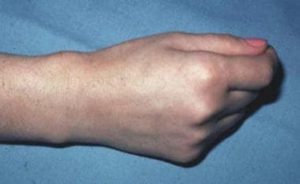
- Finkelstein’s test: I may ask you to perform a Finkelstein test, in which you bend your thumb across the palm of your hand and bend your fingers down over your thumb. Then you bend your wrist toward your little finger. If this causes pain on the thumb side of your wrist, you likely have de Quervain tenosynovitis.
Treatment
STAY TUNED! In the October 2022 blog I will discuss the treatment options, both surgical and non-surgical, for de Quervain’s tenosynovitis.
See you in a month!!!
If you feel as if you or any of your family and friends could have any of the symptoms provided here, medical care is available. I am ready and happy to help you keep your hands healthy and functional.
Thank you,
Ayisha Livingstone, MD
Fellowship Trained and Board-Certified Orthopedic Hand Surgeon

Click Here to learn more about Dr Ayisha Livingstone
